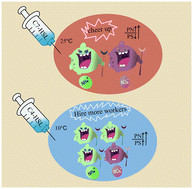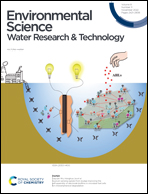Effects of different N-acyl homoserine lactones on the performance of high ammonia nitrogen wastewater treatment: a bioaugmentation strategy at room and low temperature†
Abstract
Due to the high environmental sensitivity of nitrifying bacteria, the biological nitrogen removal process is facing the challenge of poor stability and treatment performance, especially at low temperature. Adding exogenous N-acyl homoserine lactones (AHLs) is a potential bioaugmentation method. In order to evaluate the roles of different AHLs, the effects of 2 μM exogenous five AHLs on the distribution of AHLs, reactor performance, extracellular polymeric substance (EPS) characteristics and microbial community structure in lab-scale SBRs treating high ammonia nitrogen wastewater were systematically studied at 25 °C and 10 °C. The results showed that the effects of the five AHLs were significantly different, and the same AHLs behaved quite differently at the two temperatures. The residual amount of exogenous AHLs at room temperature was lower than that at low temperature, while the reverse was true for endogenous AHLs. At 25 °C, the best-performing N-heptanoyl-L-homoserine lactone (C7-HSL) significantly promoted the growth and activity of microorganisms, enhanced protein synthesis and the formation of tryptophan amino acids, and inhibited polysaccharide production, thereby effectively controlling nitrite nitrogen accumulation. However, N-butyryl-DL-homoserine lactone (C4-HSL) outcompeted it at 10 °C, which enhanced the nitrogen removal by simultaneously accelerating the formation of proteins and polysaccharides, increasing the abundance of nitrifying bacteria and promoting the growth of microorganisms. Consequently, this study may offer a feasible approach to enhance the performance of treating high ammonia nitrogen wastewater through selecting appropriate AHLs.



 Please wait while we load your content...
Please wait while we load your content...